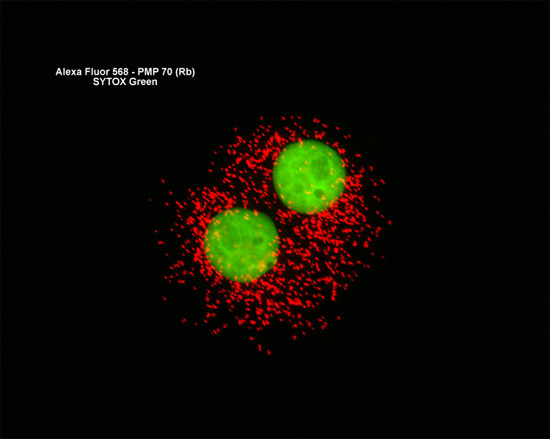The HeLa line, which played a key role in the development of the polio vaccine, is one of the most widely known cell lines in the world. The cells were developed in the early 1950s from a sample taken from a cervical adenocarcinoma. HeLa cells are extremely virulent and can reproduce an entire generation every 24 hours.
Human Cervical Adenocarcinoma Cells

The HeLa cell carcinoma culture featured in the digital image above was immunofluorescently labeled with Alexa Fluor 568 conjugated to goat secondary antibody fragments directed against rabbit primary antibodies to peroxisomal membrane protein 70 (PMP 70), a major peroxisome membrane polypeptide. In addition, the culture was also counterstained for nuclear DNA with SYTOX Green. Images were recorded in grayscale with a Hamamatsu ORCA AG camera system coupled to a ZEISS Axio Imager microscope equipped with bandpass emission fluorescence filter optical blocks provided by Chroma and Semrock. During the processing stage, individual image channels were pseudocolored with RGB values corresponding to each of the fluorophore emission spectral profiles.



